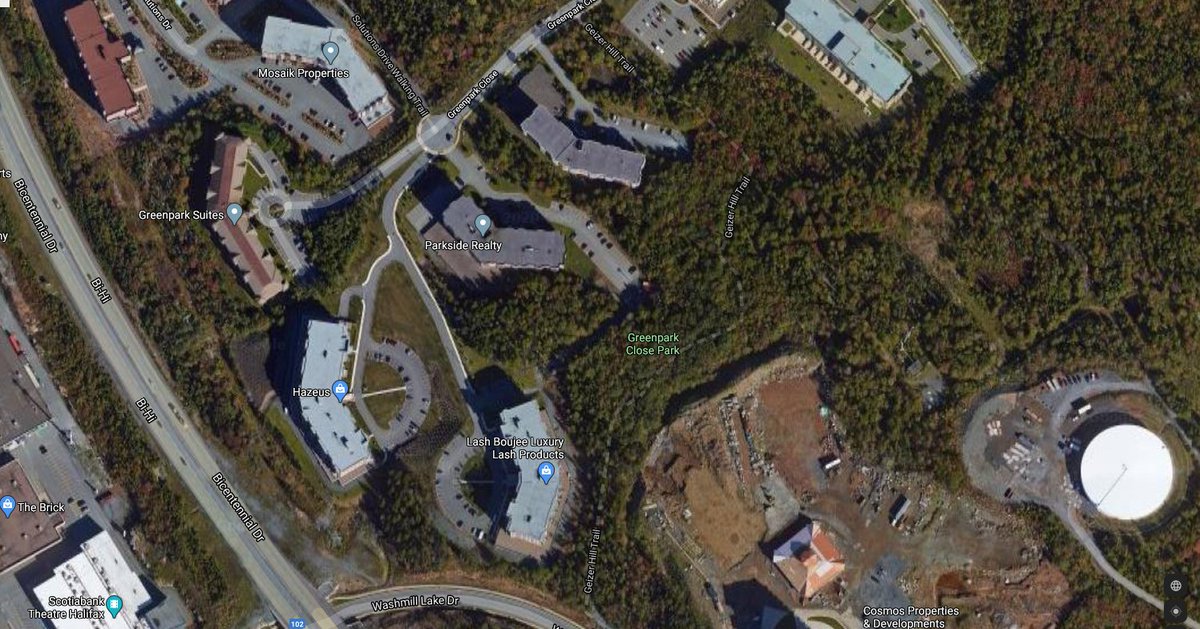Gold in Clayton Park?!
There were reportedly several small-scale gold mines on Geizer Hill starting at the end of the 1800s.
Read this thread for more info!
#nspoli #cbpoli #novascotia #capebreton #nshistory
@geoffregan @RafahDiCostanzo @SeanFraserMP @LarryHarrisonPC

There were reportedly several small-scale gold mines on Geizer Hill starting at the end of the 1800s.
Read this thread for more info!
#nspoli #cbpoli #novascotia #capebreton #nshistory
@geoffregan @RafahDiCostanzo @SeanFraserMP @LarryHarrisonPC


Geizer Hill, the other side of hwy 102 from #BayersLake, was forested back then. An article in the Feb. 1898 edition of Canadian Mining Reviews even described it as being “about three miles from Halifax,” a reminder of how much #Halifax has grown over the past century.
#nspoli
#nspoli

According to the article, “a trial run of one ton [of ore] gave six penny weights, eight grains." One penny weight is 1.5 grams so this test of the ore produced about 9 grams of #gold, or a 1/3 of an ounce.
#nspoli #cbpoli #novascotia #capebreton #nshistory
#nspoli #cbpoli #novascotia #capebreton #nshistory

That was a decent but not spectacular amount since successful #gold mines in that era often produced 1-2 ounces per ton of ore.
#nspoli #cbpoli #novascotia #capebreton #nshistory
#nspoli #cbpoli #novascotia #capebreton #nshistory

According to a January 18, 1898 story in the Mail Star newspaper, Alexander Taylor claimed to have found #gold-bearing quartz all over his land on Geizer Hill and that he had hundreds of tons of quartz ready for the crusher.
#nspoli #cbpoli #novascotia #capebreton #nshistory
#nspoli #cbpoli #novascotia #capebreton #nshistory

A January 25, 1899 story in the Mail Star said there were many prospectors on Geizer Hill and some had found #gold. Some were excavating near a Mr. MacDonald’s house and they reportedly found gold-bearing quartz.
#nspoli #cbpoli #novascotia #capebreton #nshistory
#nspoli #cbpoli #novascotia #capebreton #nshistory

According to the Fairview historical Society, in the 1930s Hubert Smart said prospectors dug holes all over the Rufus Avenue vicinity in a search for #gold. He said he worked there himself, blasting and drilling.
#nspoli #cbpoli #novascotia #capebreton #nshistory
#nspoli #cbpoli #novascotia #capebreton #nshistory

Much of Geizer Hill is developed today but there is still a forested area and a trail between Washmill Lake Drive and Greenpark Close.
#nspoli #cbpoli #novascotia #capebreton #nshistory
#nspoli #cbpoli #novascotia #capebreton #nshistory

In the modern era, #gold mining returned to #Halifax - well, Halifax Regional Municipality - when the #MooseRiver mine opened in 2017. It employs 300 people and is providing an essential material we all use every day (it's in the device you're using now!)
#nspoli @SeanFraserMP
#nspoli @SeanFraserMP

The Fairview Historical Society has more details on #gold mining in Clayton Park and Fairview at fairviewhistoricalsociety.ca/gold-in-the-hi…
#nspoli #cbpoli #novascotia #capebreton #nshistory

#nspoli #cbpoli #novascotia #capebreton #nshistory


• • •
Missing some Tweet in this thread? You can try to
force a refresh



























